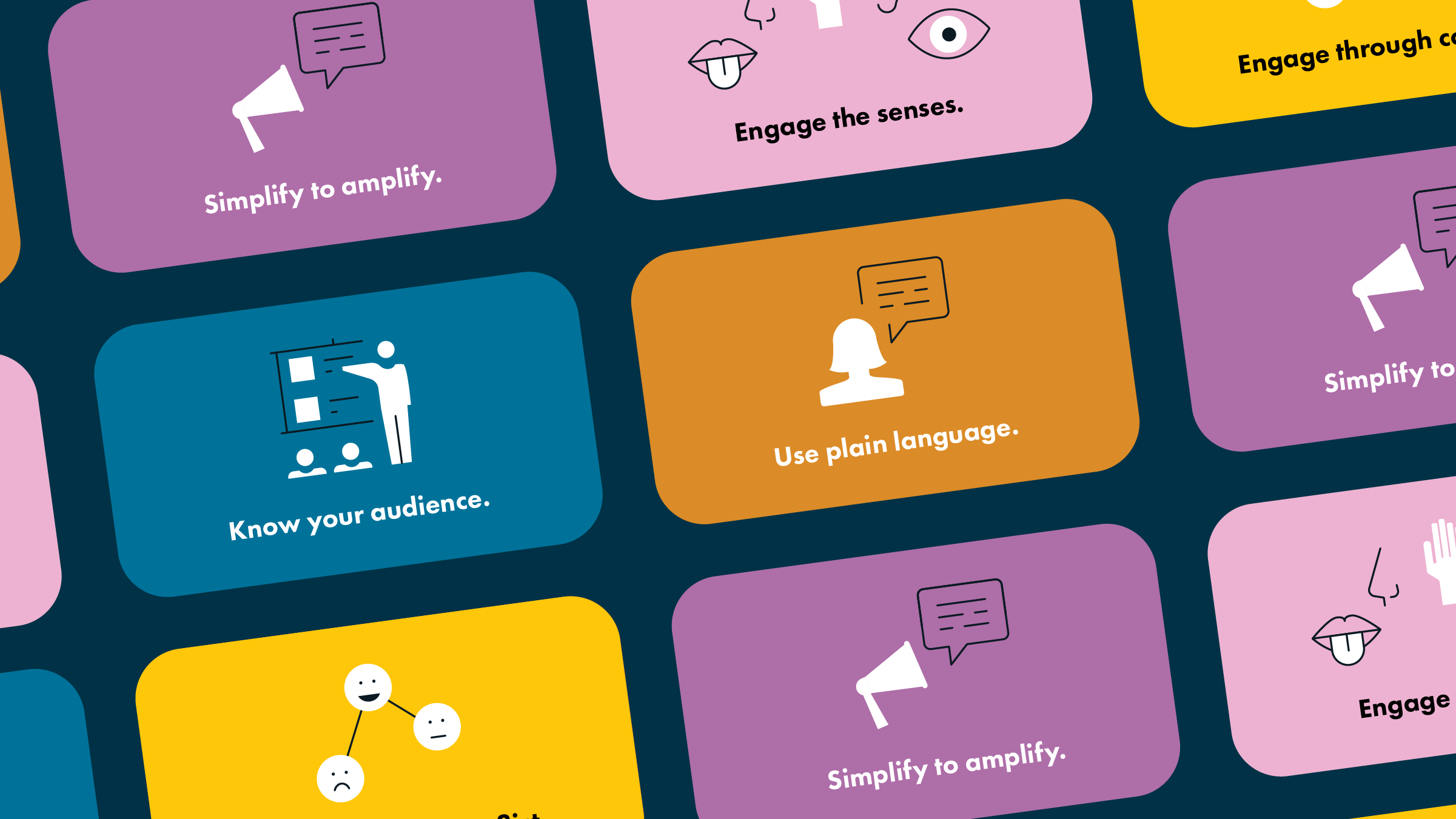Ensure your message not only reaches but deeply engages your audience. Drive transformative change efficiently with these five practical storytelling tips.
As a leader, the ability to communicate effectively is crucial particularly when it comes to engaging stakeholders and driving transformative change within your organization. Making your key message tell a story and rise above the details of change to engage the hearts and minds of your audiences is a learned skill. Accessing the power of storytelling can significantly enhance the way you connect with your audience and make your message come alive.
During our recent webinar, “Storytelling CPR: Three Effective Tips to Revive Ailing Presentations,” storytelling experts Senior Solutions Consultant Tracy Granzyk and Creative Director Tim May shared helpful tips to energize your presentations and improve how leaders communicate change.
Tip 1: Know Your Audience
This tip might seem obvious, but without knowledge of who your work needs to influence, even the most well-crafted story will miss its mark. This involves more than knowing your audience’s job titles or industry background; it’s about understanding and appreciating their challenges, experiences, and expectations. A good question to ask is, “Where are they now and where do they want to be?”, and then tailor your narrative to address their challenges and experiences. Your message will not only reach them, but it will also stick with them.
A powerful tool for understanding your audience is our Empathy Map Worksheet. It helps you analyze and understand the motivations of your audience and reveals insights you can use to create a compelling message.
Tip 2: Use Plain Language
Next, it’s important to understand your audience’s level of knowledge on a topic so you can communicate clearly with them. Avoid using technical jargon and acronyms, which can alienate or confuse listeners who may not be familiar with the terminology. Instead, use plain language that is accessible to the audience you’re speaking to; the information becomes more relatable and easier to digest, thus making your communication more effective.
However, remember that the same topic may need a slightly different narrative to connect with different but related audiences.
Also, there may be times you can’t avoid using technical language or specific terminology. When that occurs, explain the terminology or acronym the first time you use it, so the audience is familiar with it when it comes up in future areas of your presentation.

Tip 3: Simplify to Amplify
One of the common pitfalls in presentations is information overload. A key takeaway Tim and Tracy emphasized is the importance of simplicity. A good rule of thumb is ‘one idea per slide’ to maintain clarity and focus. Each slide should be a steppingstone in your story, not a barrage of facts. By reducing cognitive load, you enable the audience to engage more deeply with the content, enhancing their understanding and retention.
Tip 4: Engage the Senses
Look for opportunities to connect with your audience beyond traditional visual and auditory means and tap into their less commonly used senses like taste, touch, and smell to make your presentations more memorable. This approach advocates for a richer, more immersive experience that not only captures but sustains audience attention, transforming standard presentations into memorable stories.
Tip 5: Engage Through Conflict
Stories without conflict or challenge tend to flatline—they lack the ability to keep audiences engaged. Integrating conflict doesn’t mean dramatizing your presentation unnecessarily; rather, it means highlighting the real challenges your initiative aims to address. Whether it’s overcoming a market challenge, addressing a customer pain point, or navigating internal changes, presenting the stakes involved creates a narrative arc that listeners can root for and engage with.
At the heart of impactful presentations is the ability to tell a story well. For leaders, incorporating these storytelling tips requires practice and a shift from traditional presentation methods. Adopting these tips can significantly improve the effectiveness of your presentations, making them not only informative but also memorable and engaging. A storytelling approach not only ensures that the key messages are conveyed but also that they are remembered and acted upon, which is essential for driving change.
Additional Resources
For more storytelling tips and tricks, we recommend these resources:
